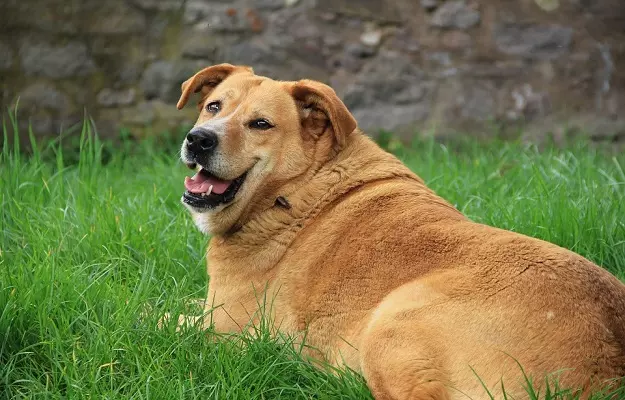Obesity is diagnosed by measuring the dog's body weight and by obtaining a body condition score (BCS), which involves assessing the amount of fat on the body.
Most veterinary practices use a body condition scoring system on a scale of either 1-5 (3 is normal) or 1-9 (4.5 is normal).
The BCS score chart figures out whether your dog is overweight or obese by appearance and touch. Following are the meaning of each score:
Too thin
1: No body fat is visible as you can clearly see the ribs, lumbar bone, pelvic bone and all bony prominences even from a distance.
2: Very minimal body fat with visible ribs, pelvic bone and some of the bony prominences.
3: No palpable fat with lumbar bone visible from the top, easily visible abdominal tuck behind the ribs.
Ideal
4: Easily palpable ribs with minimal fat. Proper waistline and abdominal tuck are visible from the top.
5: Easily palpable ribs without excessive fat, waistline visible from the top and abdominal tuck are seen from the side.
Too heavy
6: Ribs are palpable but with a slight amount of fat layer covering them, the waistline is not prominent, abdominal tuck is visible.
7: Ribs are palpable but with slight difficulty, the waistline is absent and fat deposits can be seen in the lumbar area, abdominal tuck is slightly visible.
8: Ribs are only palpable after putting a lot of pressure over the thick fatty skin, no abdominal tuck and waistline visible.
9: Massive fat deposition all over the body including neck, limbs and spine with a distended abdomen. Waist and abdominal tuck are absent.
Your veterinarian will diagnose by examining your dog and feeling their ribs, lumbar area, tail and head. Results can vary for different breeds like certain lean breeds such as the greyhound and most sighthounds will be at a normal weight even when ribs are visible from a distance. So it would be best to take your dog to the vet for an accurate diagnosis.
Overweight in dogs is defined as a BCS of 6/9 or 7/9. Canine obesity is defined, as in people, as weighing about 30% or more over ideal (equivalent to a BCS 8/9 or 9/9).











